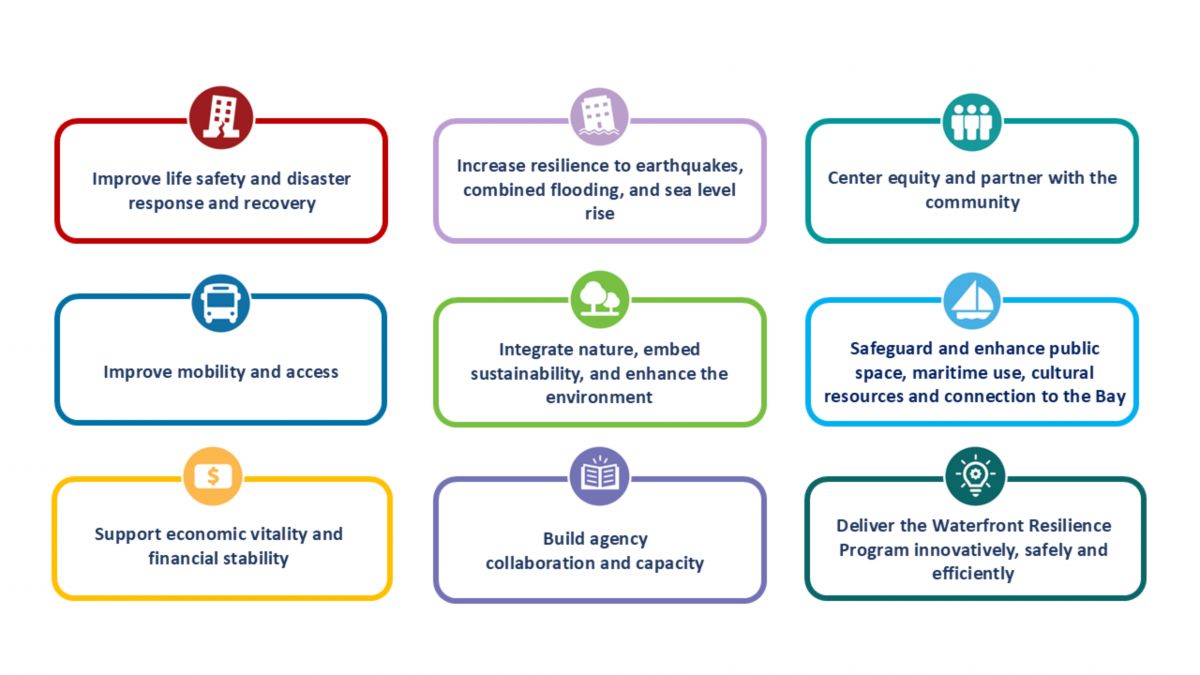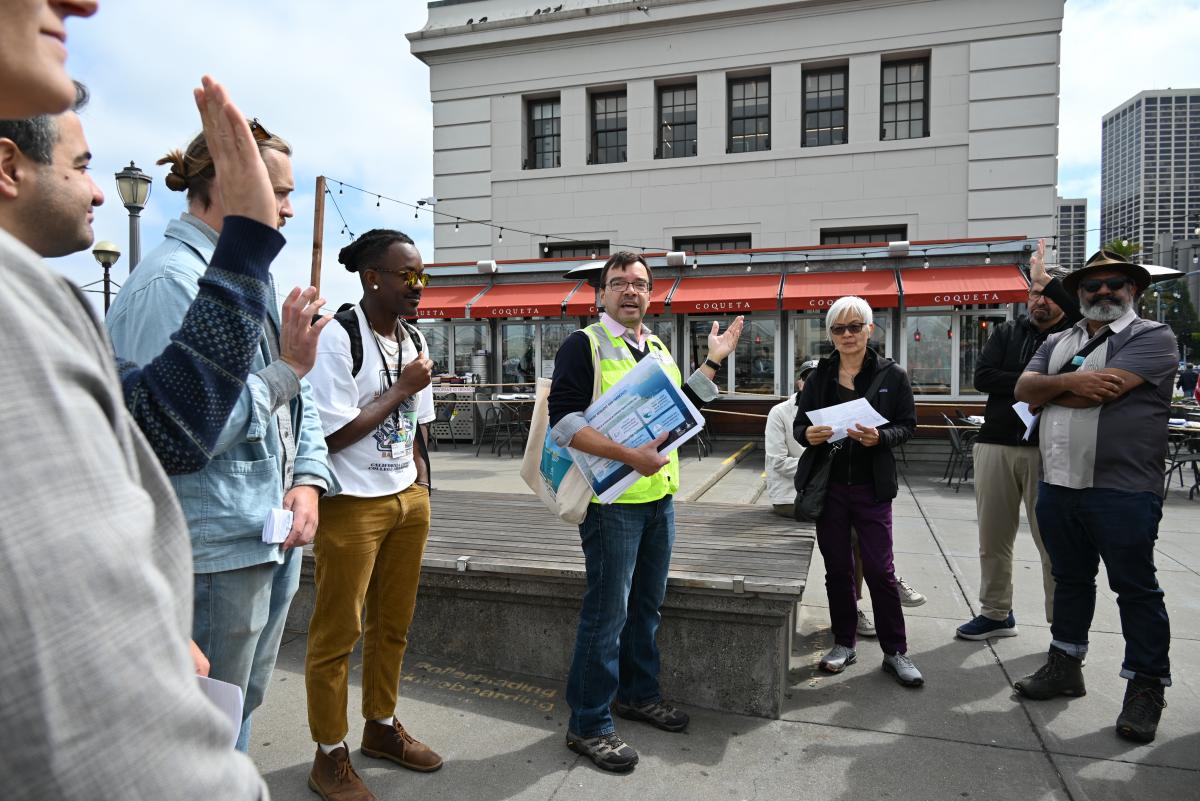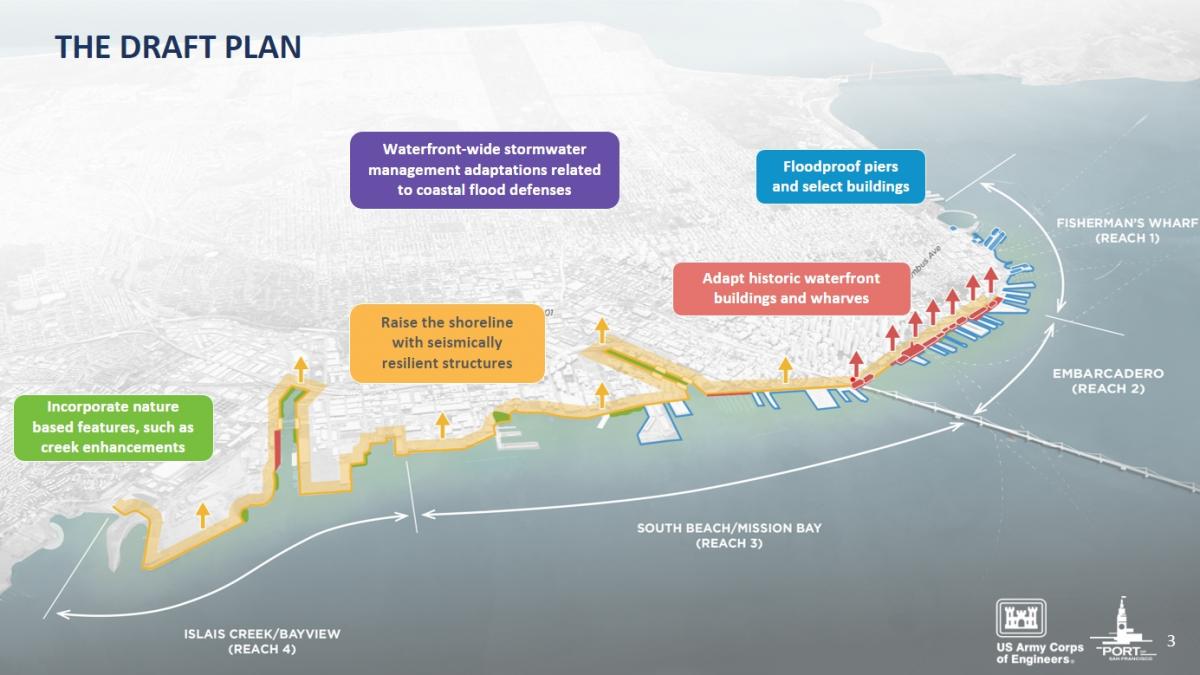About The Waterfront Resilience Program
The Port of San Francisco manages 7.5 miles of bayside shoreline that is home to some of the region’s most popular open spaces and attractions, a national historic district, hundreds of small businesses, nearby housing, and maritime and industrial uses. The Port’s jurisdiction includes transportation networks like BART and Muni, critical utilities including drinking and wastewater, and key emergency response facilities.
The Port established the Waterfront Resilience Program to ensure the waterfront, and its important regional and citywide assets, are resilient in the face of hazards such as earthquakes, flooding, sea level rise due to climate change, and shoreline erosion.
The Port’s Waterfront Resilience Program involves close coordination with other City department and regional partners to ensure the work aligns with Citywide and regional guidance, policies, projects, and other efforts.
Vision: The Port’s Waterfront Resilience Program takes actions to reduce seismic and climate change risks that support a safe, equitable, sustainable, and vibrant waterfront.
Goals: We asked the community to weigh in on the Program vision and goals. Community feedback strongly affirmed the Port’s vision and goals, and the public encouraged the Port to:

The Waterfront Resilience Program is guided by the Port's Racial Equity Action Plan, which outlines goals and objectives to advance the Port's vision to become a more equitable organization and serves as the blueprint for advancing racial equity in all aspects of the Port.
The Port’s Racial Equity Action Plan goals are:
-
Port opportunities are shared with People of Color,
-
The San Francisco waterfront intentionally welcomes and includes diverse communities,
-
The Port is an anti-racist organization, and
-
The Port is a workplace built on equitable policies and practices.
The Waterfront Resilience Program advances racial and social equity by:
-
Centering the voices of communities of color, low-income communities, and disadvantaged and historically marginalized communities through robust, meaningful, and inclusive public outreach and engagement.
-
Developing, and investing in resilience projects that reduce flood and seismic risk in and around disadvantaged and historically marginalized communities.
-
Ensuring equitable hiring and contracting practices and supporting the development of a diverse workforce to design and deliver projects associated with the Waterfront Resilience Program.
-
Utilizing data on the equity impacts of the Waterfront Resilience Program's work to inform future decision-making.

Engaging with the community is a cornerstone of the Waterfront Resilience Program. Through public input and collaboration, we ensure that our plans and projects reflect the needs and priorities of those who live, work, and play along the waterfront. Learn more about outreach.

San Francisco Waterfront Flood Study - Draft Plan Released
The U.S. Army Corps of Engineers (USACE), in collaboration with the City of San Francisco, have released the Draft Plan to build coastal flood defenses along the Port's 7.5-mile jurisdiction between Aquatic Park and Heron's Head Park. Reflecting more than six years of community engagement and public input, the Draft Plan proposes actions to defend the shoreline against rising sea levels and presents an environmental analysis of those actions. Learn more.